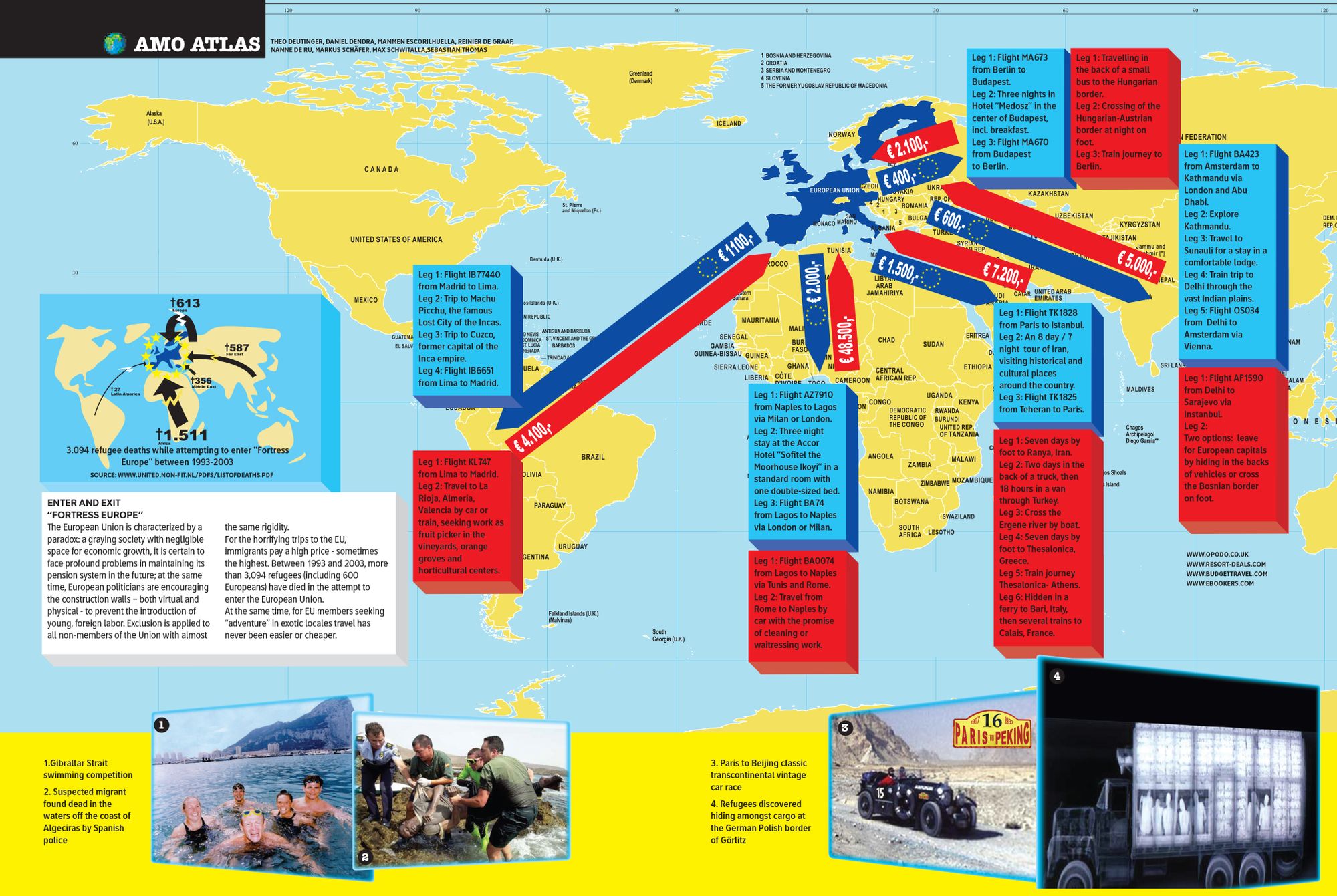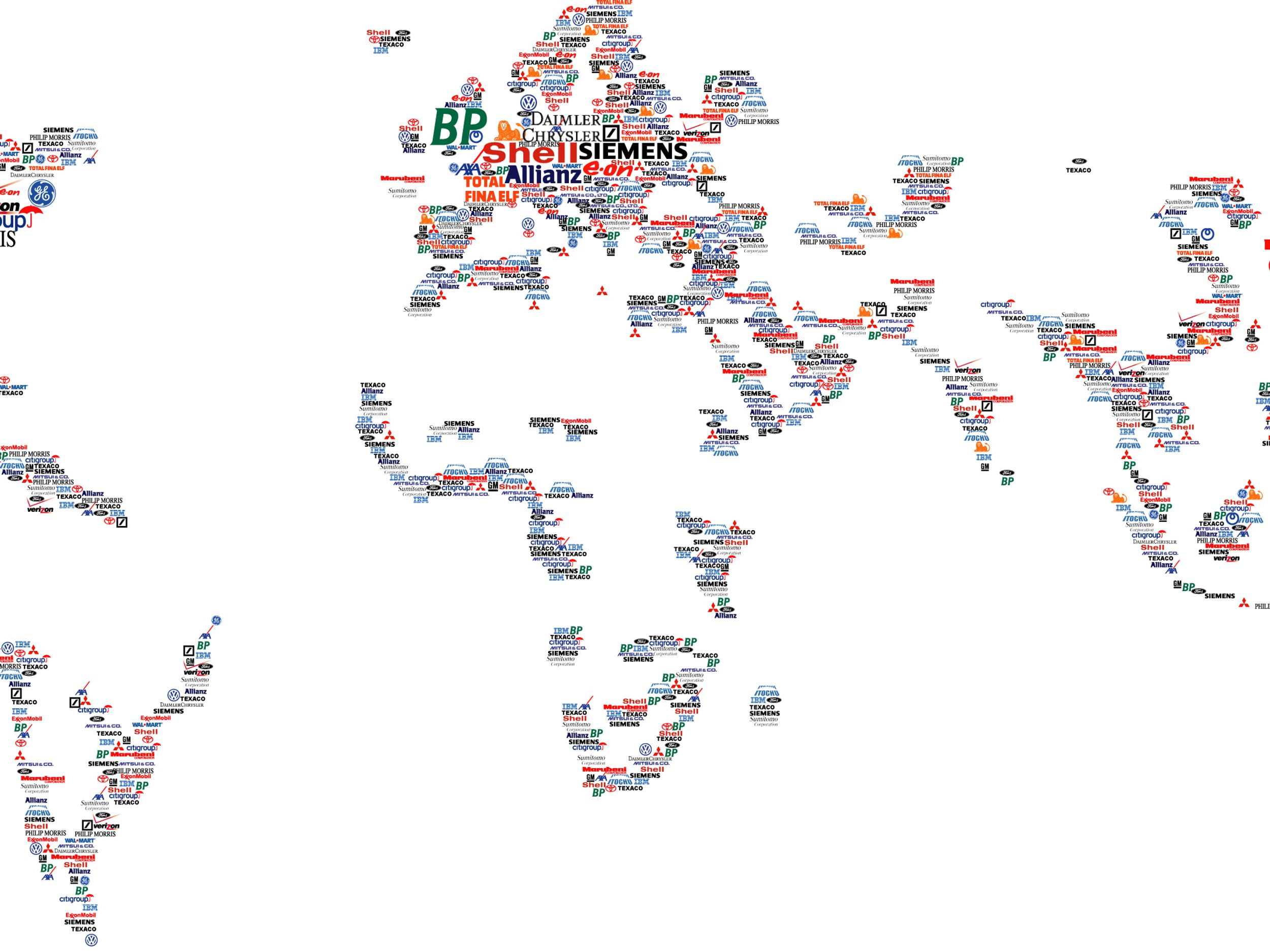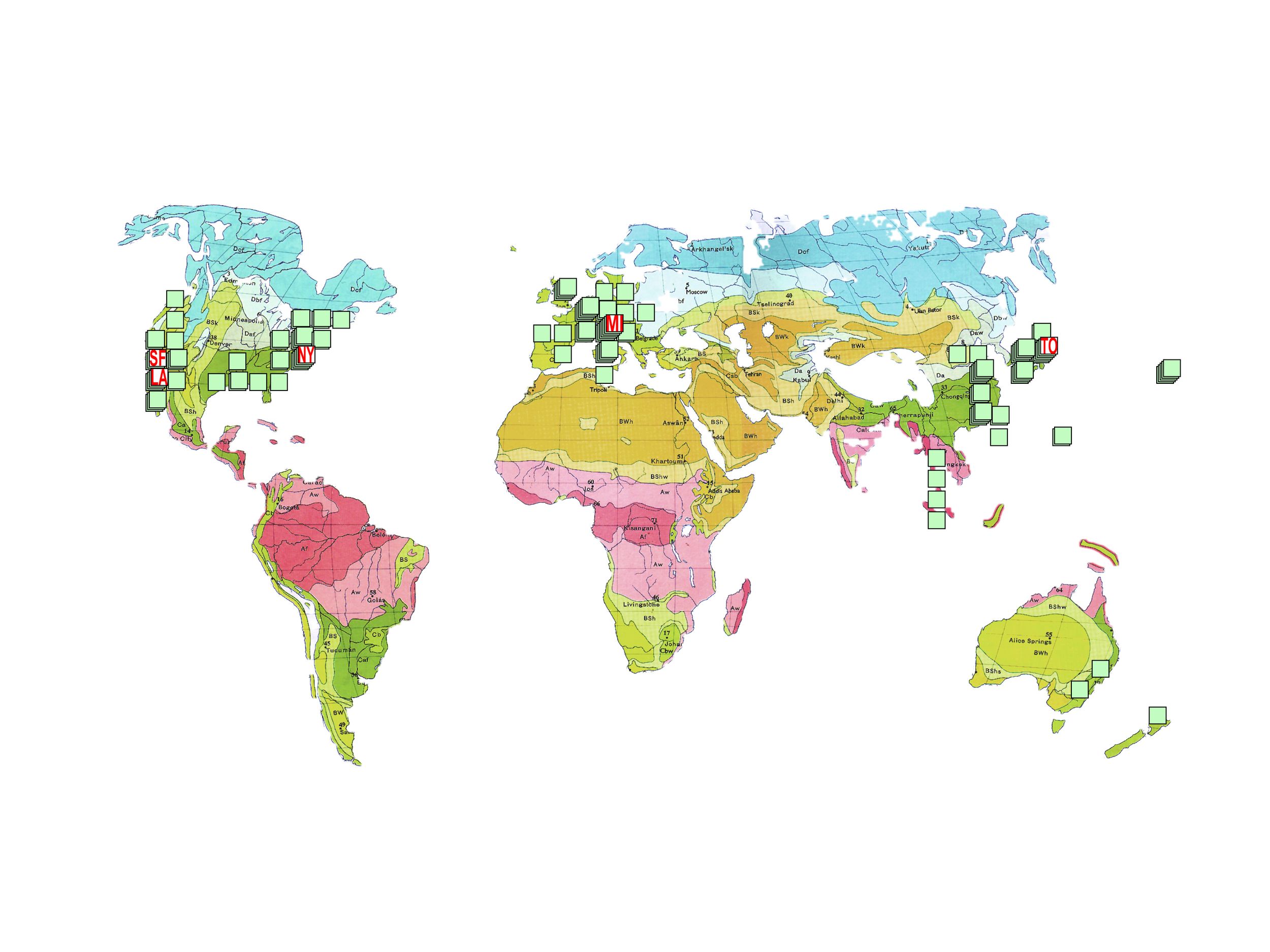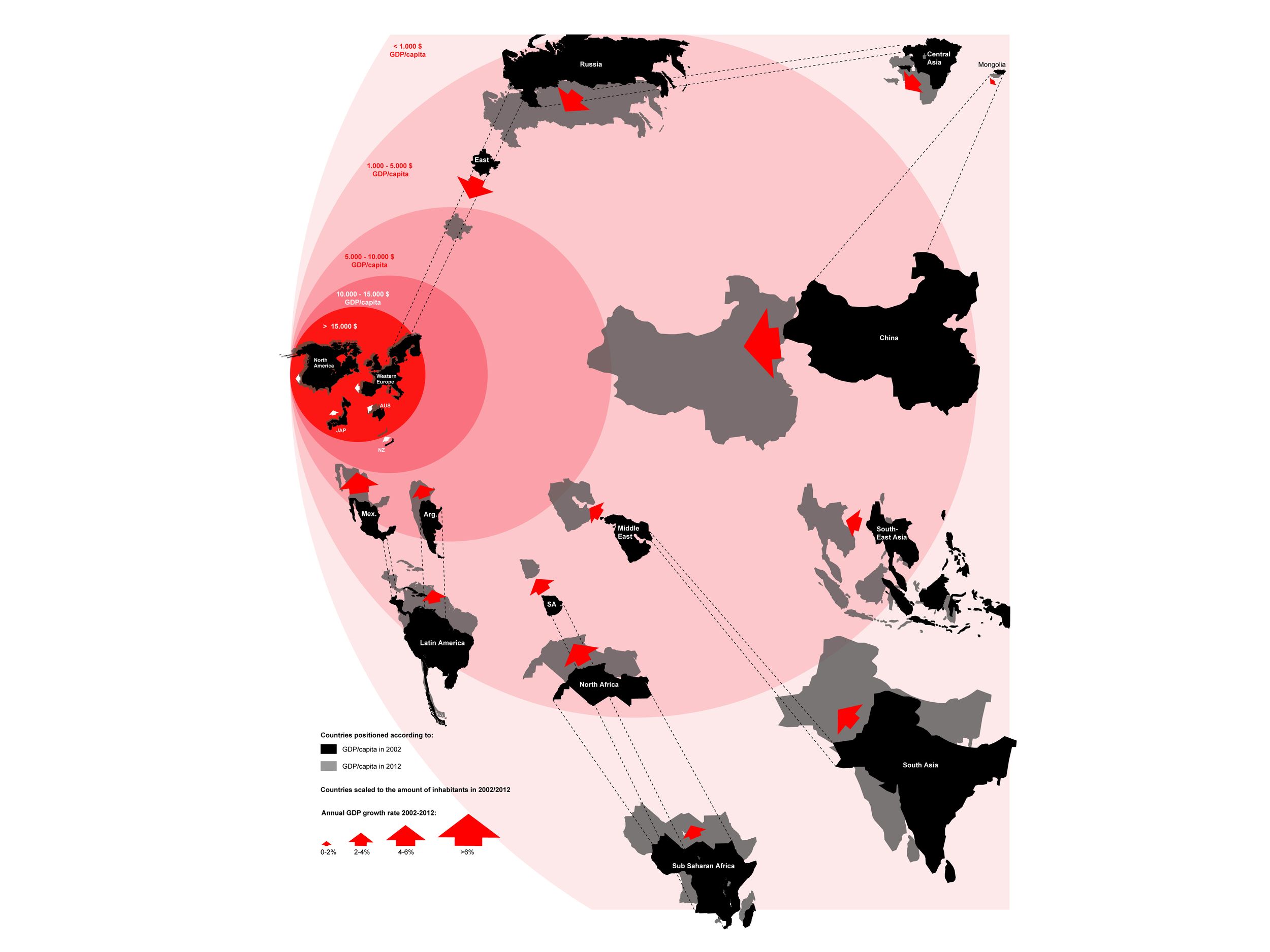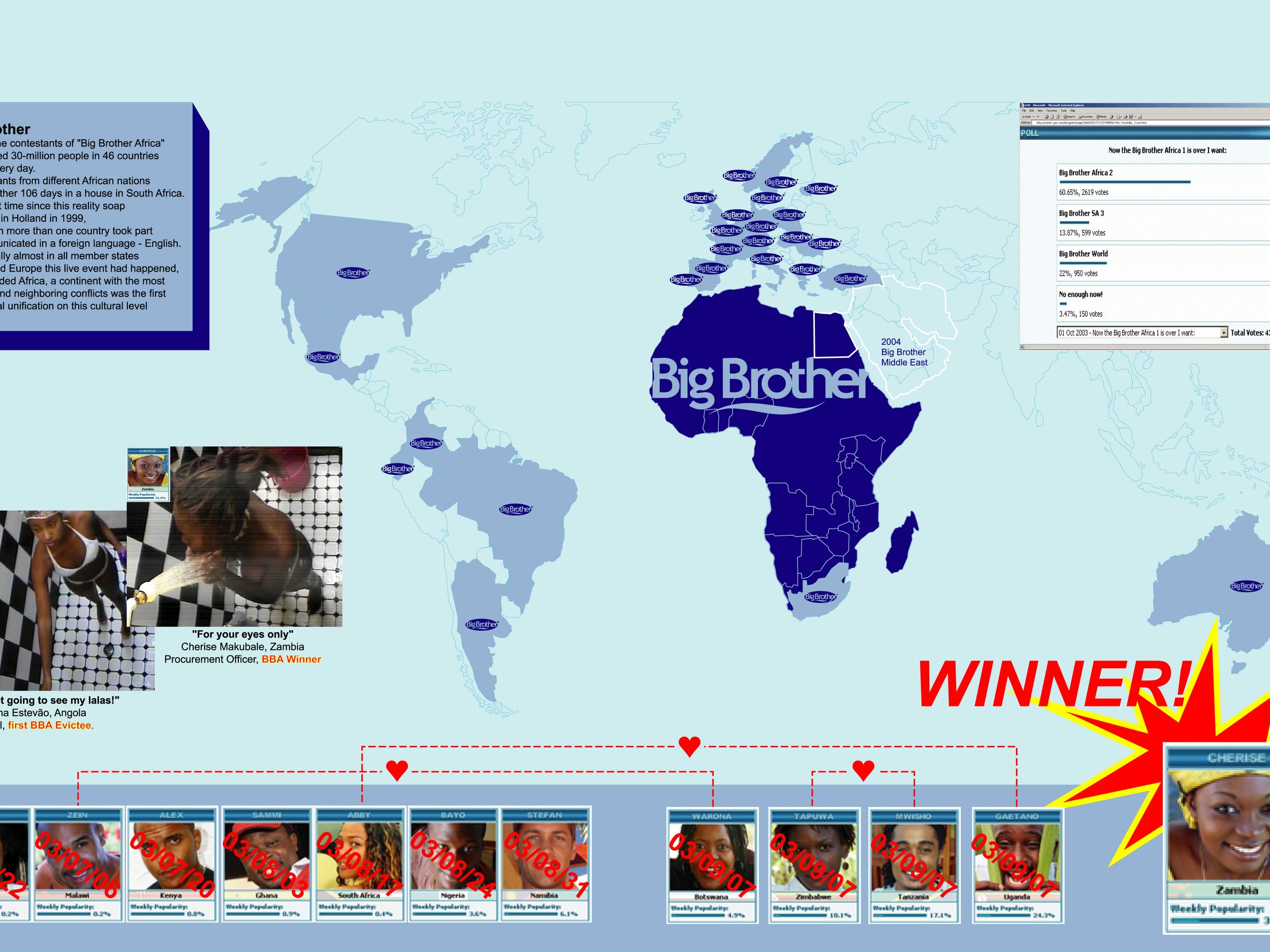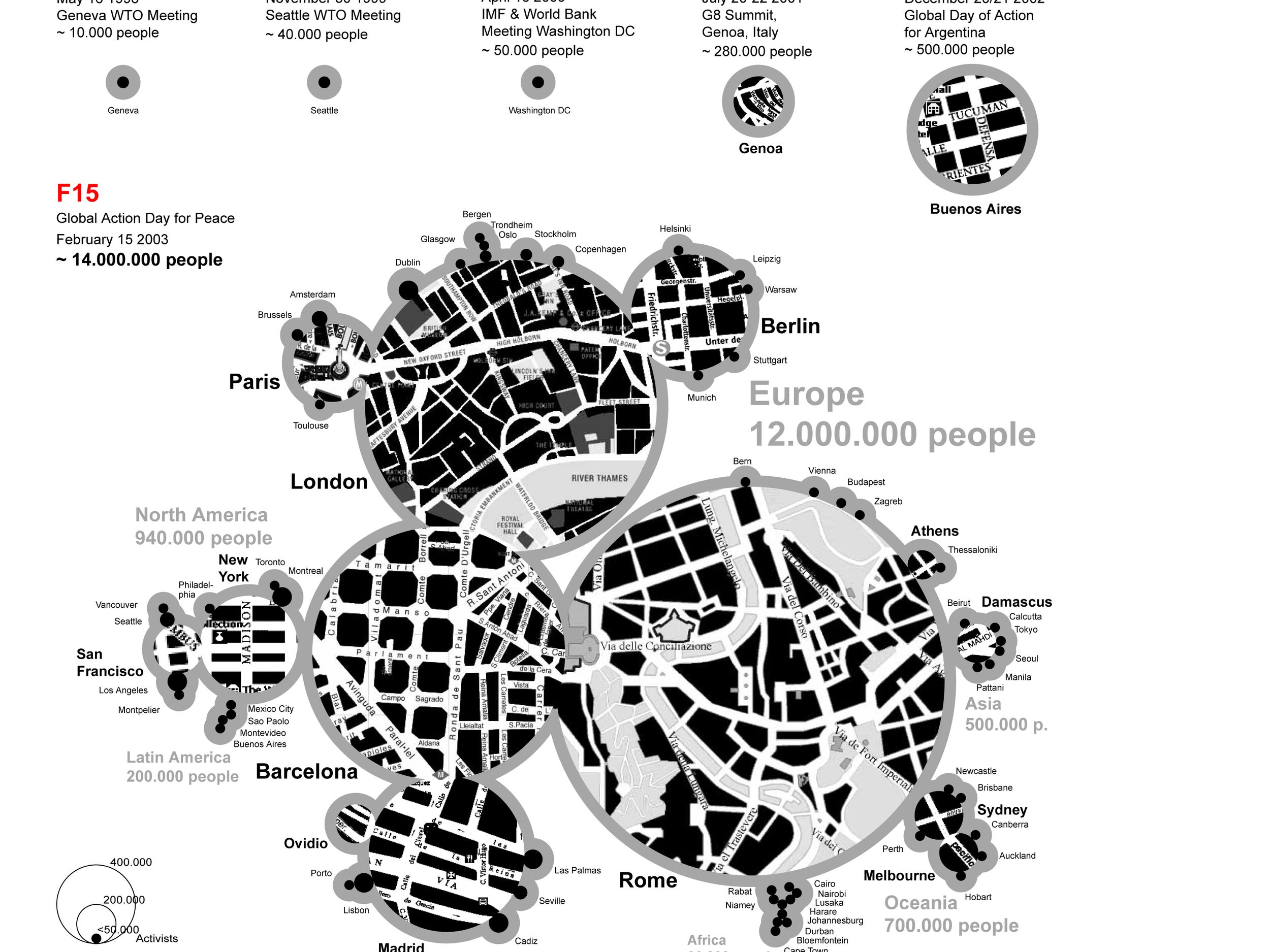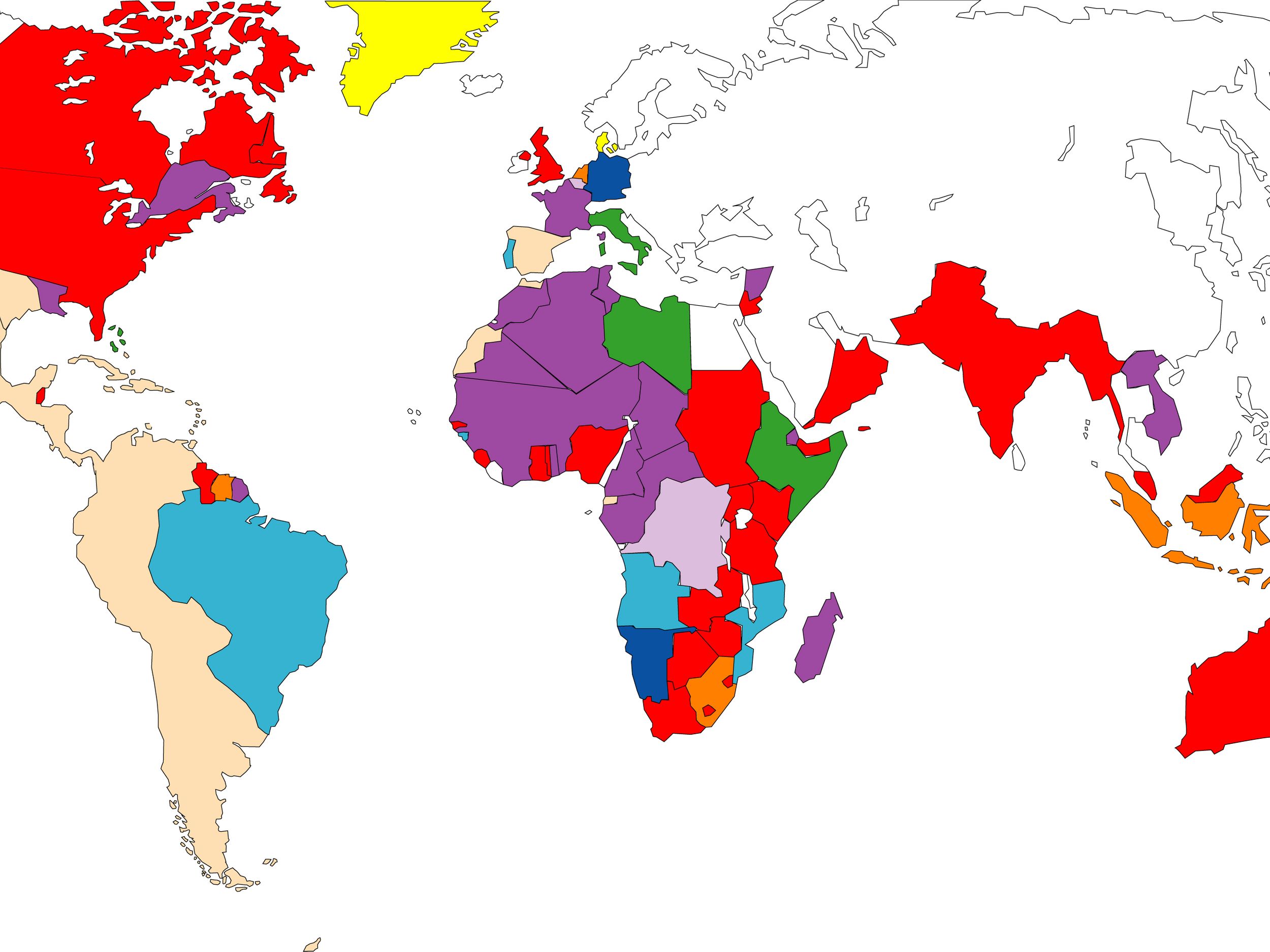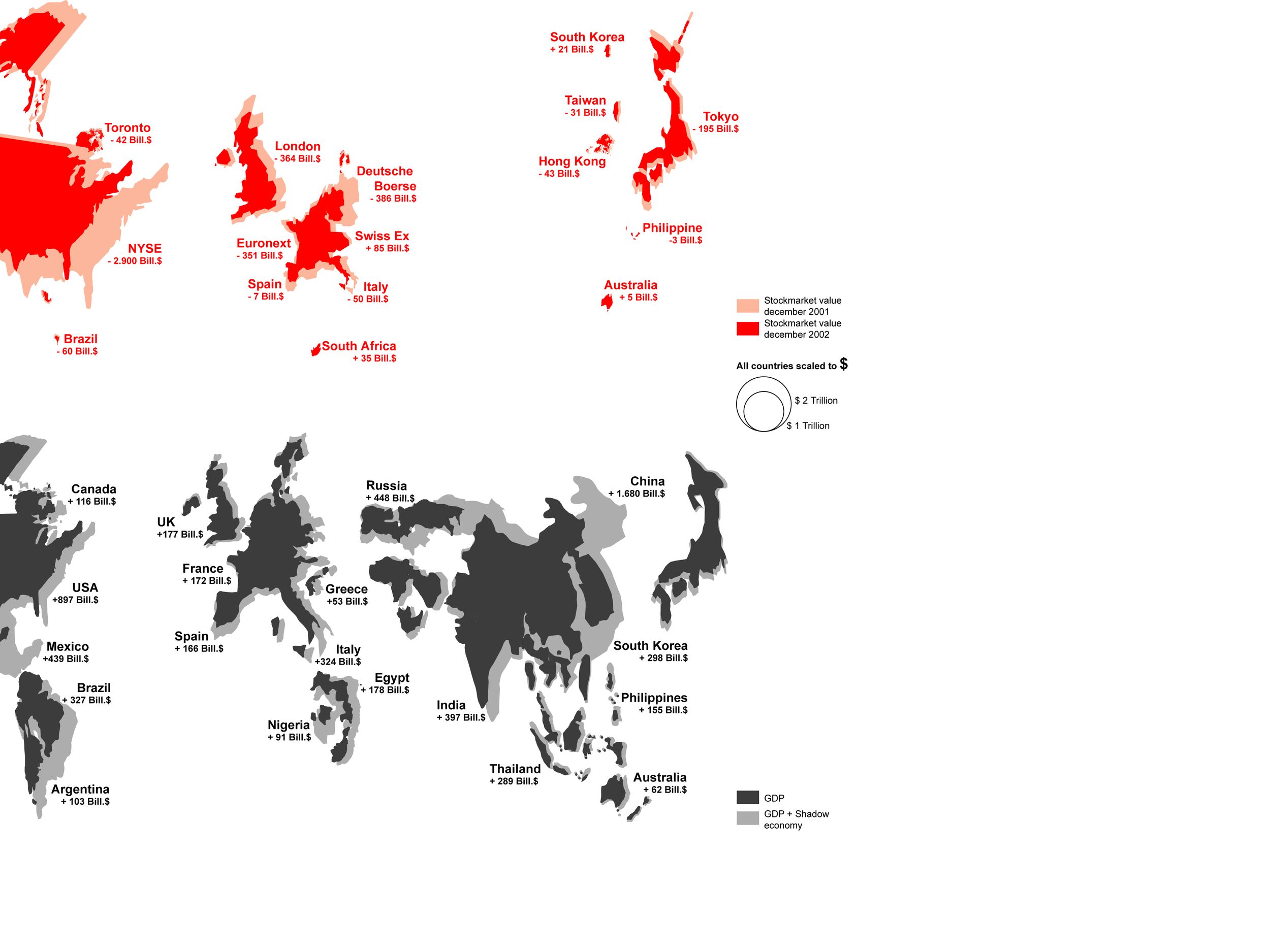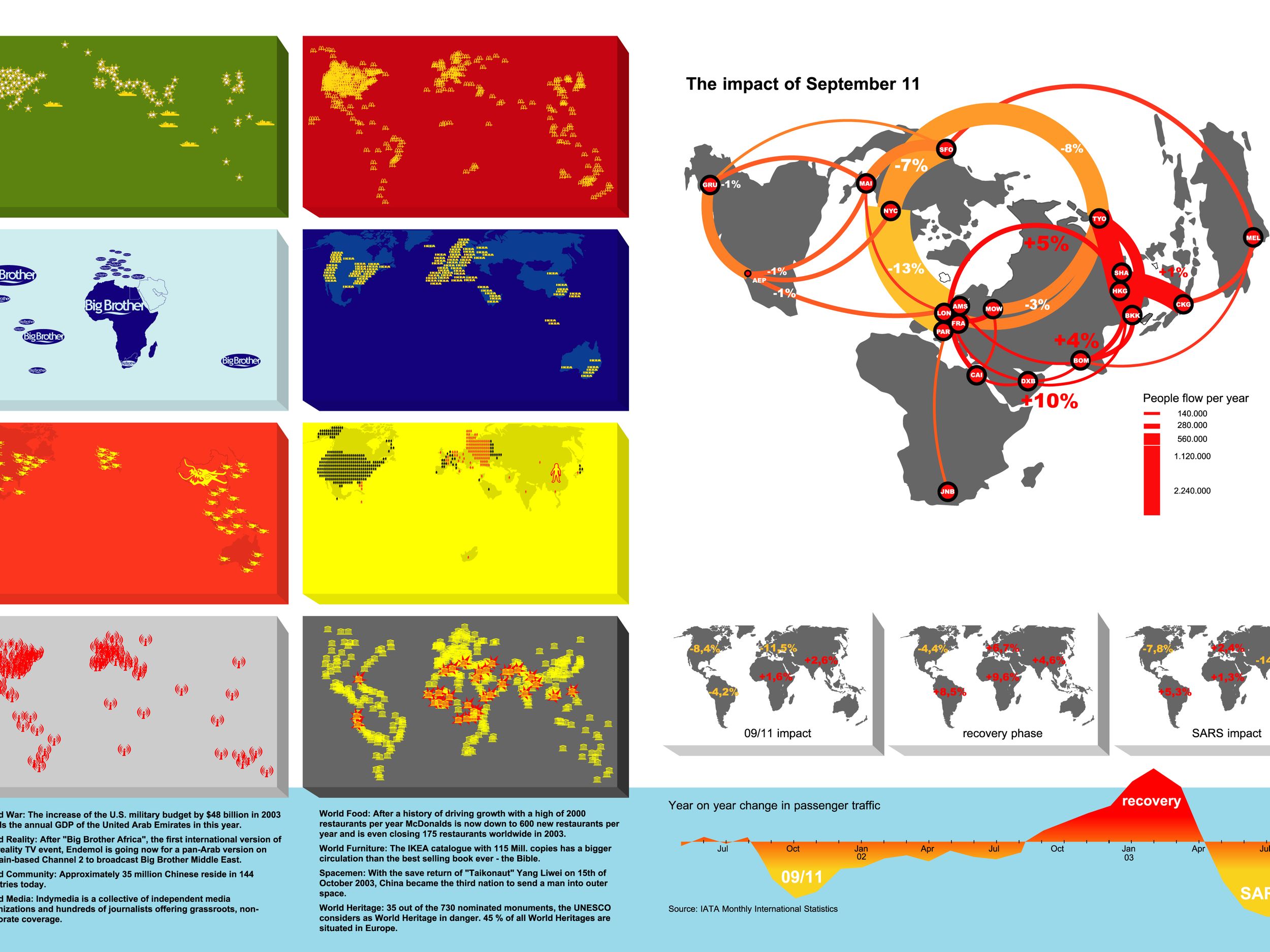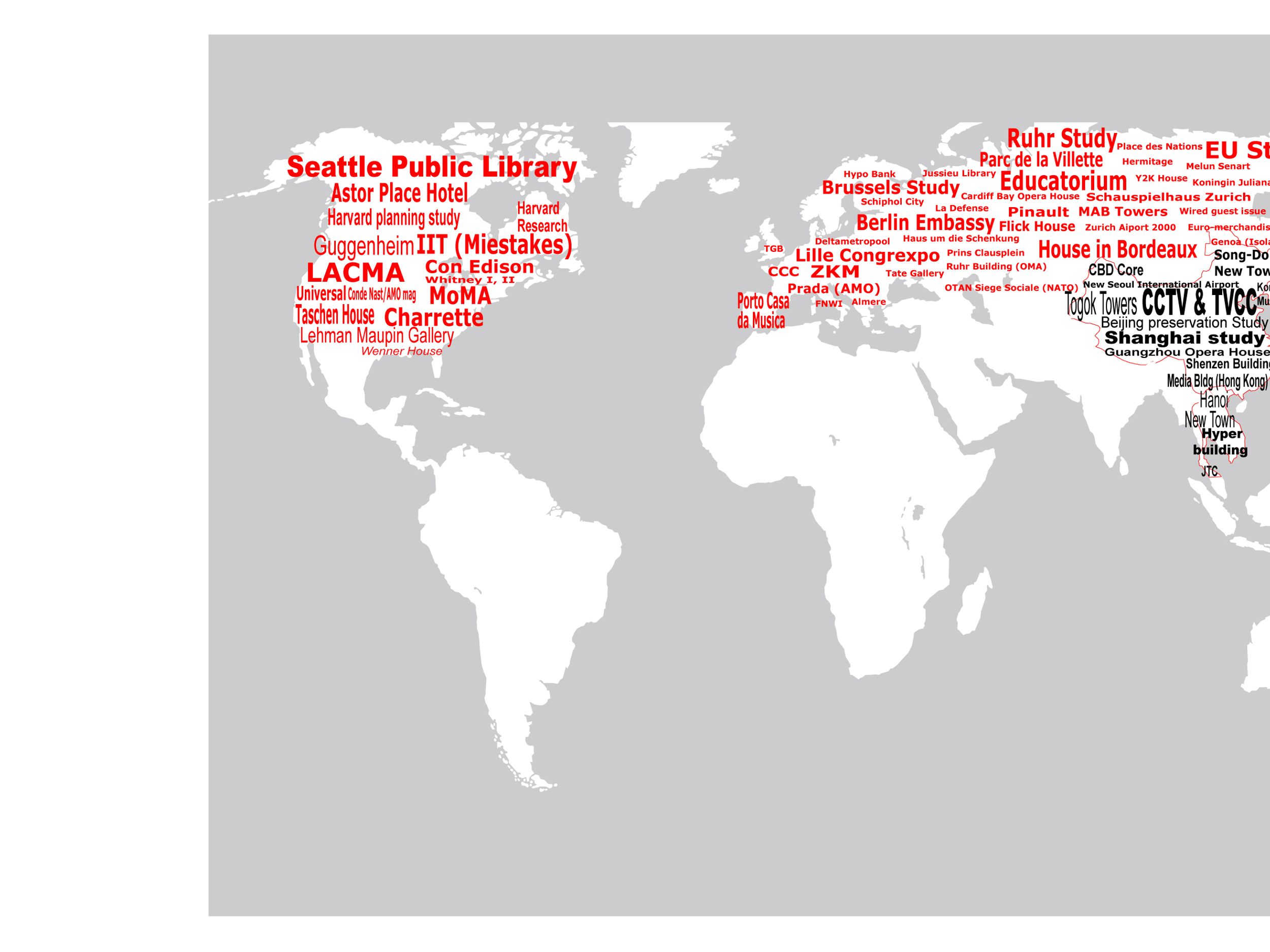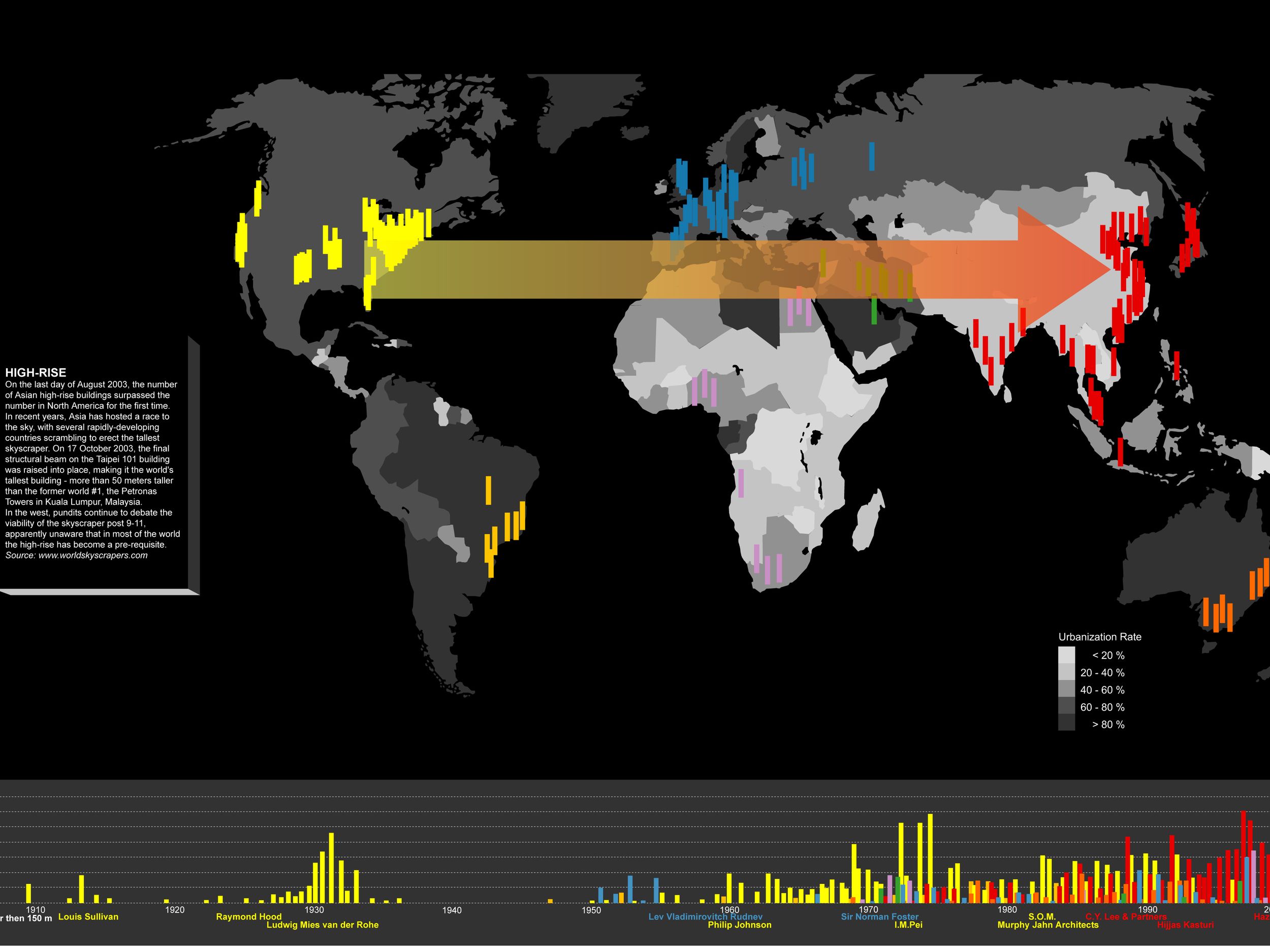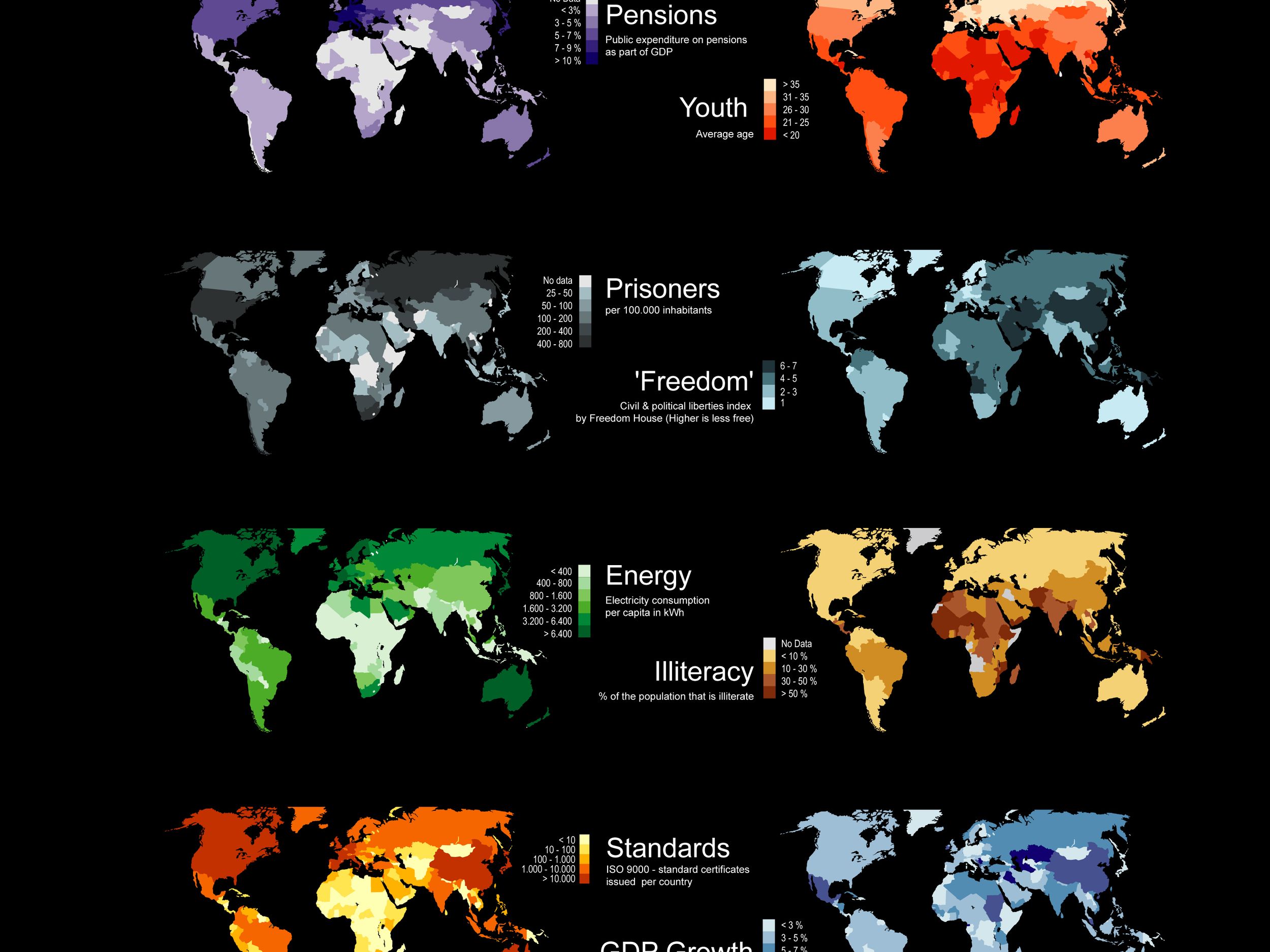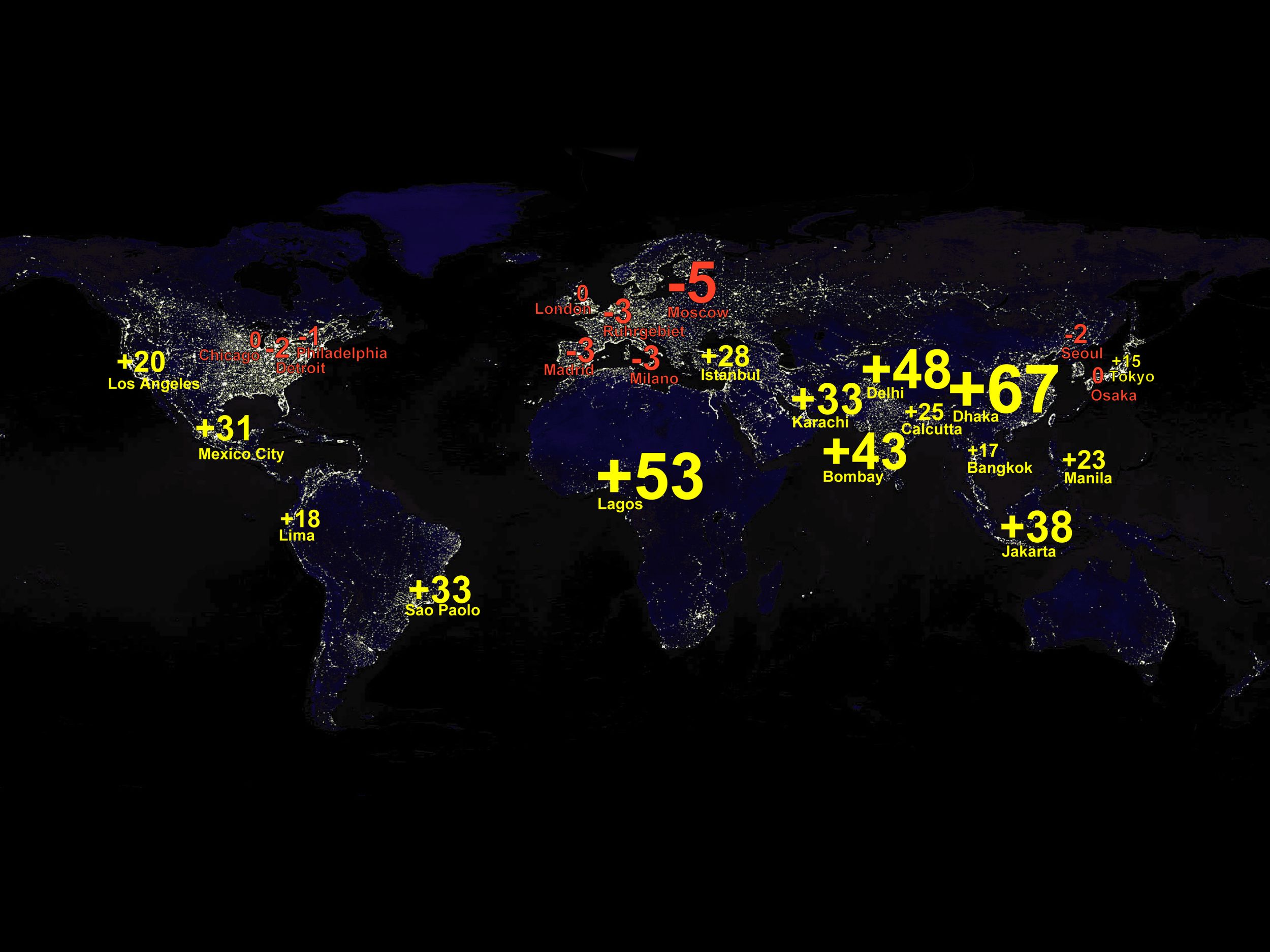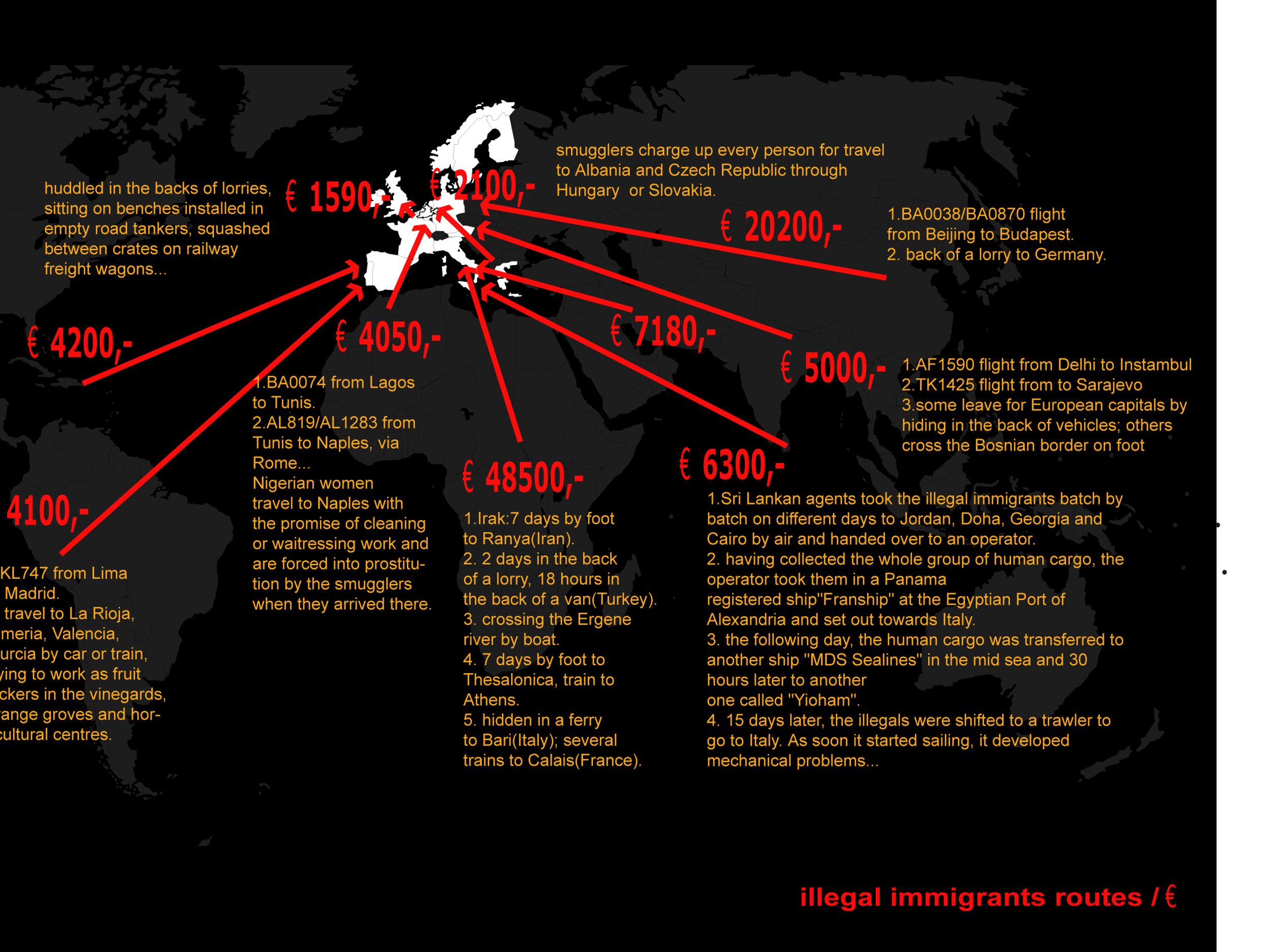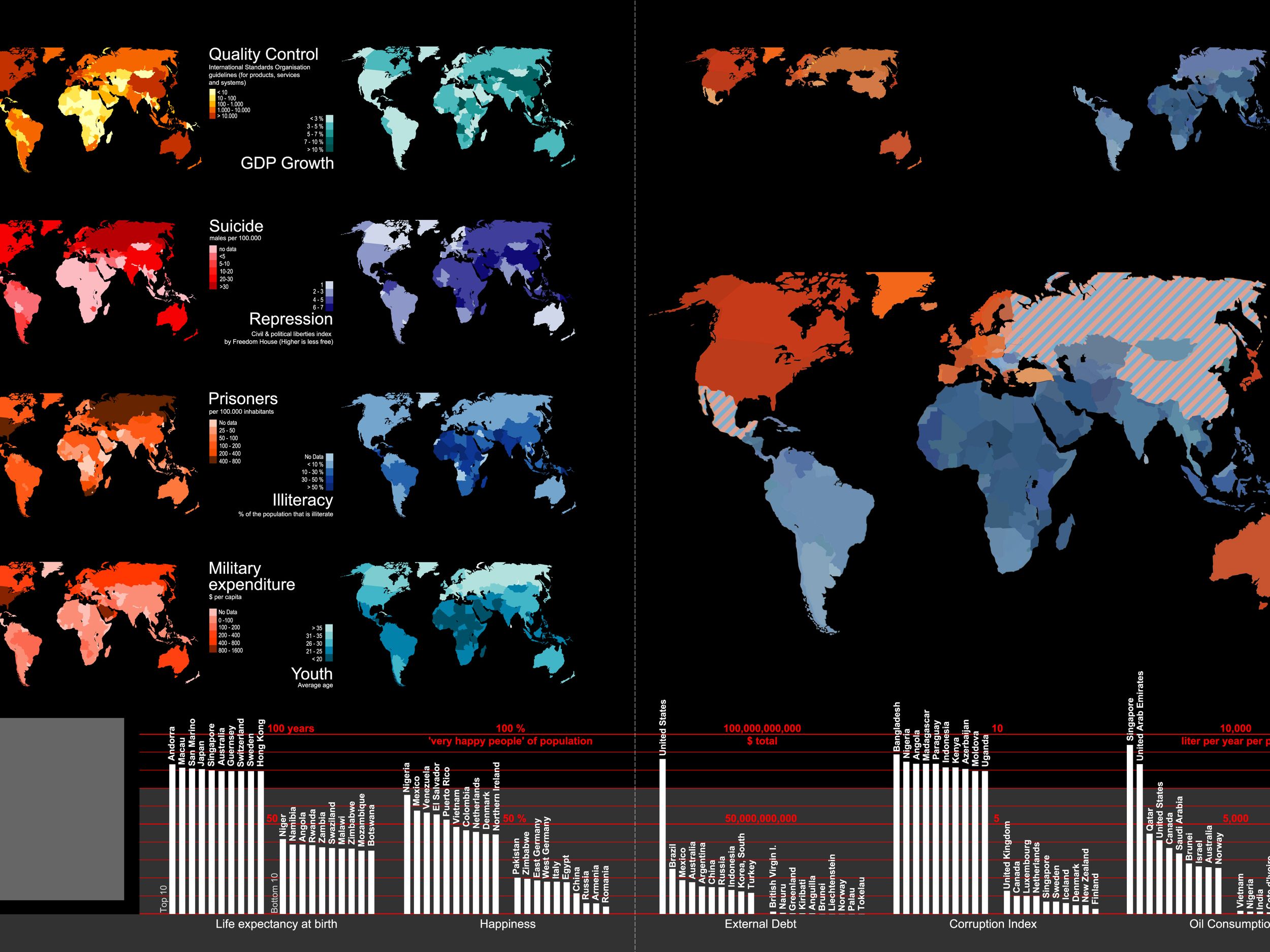“While the atlas appeared out of the simple need to make an image of the geopolitical substance of the world and later on of new discoveries, it is now, after wiping out the last white spots, becoming more and more a tool to show non-physical information. But the information for these new atlases is fluid and the way in which the world presents itself is not bound to geographical shape. New constellations or alliances appear. The global movements which determine our current life, are surrounding us as nebulous mass, sticking out as newspaper headings to then disappear again.
We try to consolidate these clouds and freeze them into a map as a contemporary manifestation of events. The impact of a single event like an anti-war protest on the 15th February 2003, the burst of the IT-bubble in 2002 or more long term shifts like appearance of the YES world are captured in this way.
This is an exhalation of history. But it is not just shear interest in the current status of the world.
Though there is no place on earth which is not influenced by the forces of globalization, every project in the OMA/AMO office asks for its global context.
The city is the place where global events show their local impact.
At the start of the 20th century, 10 percent of the earth’s population lived in cities. By the end of this decade, 50 percent will be urban dwellers – urban dwellers which see themselves more and more influenced by rapidly changing global phenomena. The city is the place where global events show their local impact.
In its attempt to visualize current trends, AMO tries to predict the possible future state of urban life, design future, global scenarios and specific OMA projects in a global context. In our atlas we don’t discover or calculate new data but visualize existing official data in order to show the political, economical and social trends which affect the metropolis.
The global aspect of metropolis appeared only in the last quarter of the 20th century while the term world-city or “Weltstadt” was first used by Goethe himself in 1787. He applied it then to Rome and Paris. While at the time of industrialization the world-city was introduced, globalization explosively spread it out all over the globe. However the usage of the term is currently reduced to the cities of the western world while cities in Asia and Africa bypass these self proclaimed ‘world-cities’ in terms of inhabitants and population growth. And also with their economic growth most of these cities are doing much better; e.g. Shanghai’s GDP growth is more than three times higher and it has three times more inhabitants than London.”
